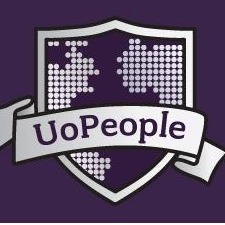 The cost of college education continues to rise faster than inflation and even faster than medical care. While many people are aware of the issue and a fair number have started conversations about reform, there has been very little experimentation with less costly models. One creative new model seeks to go beyond simply reducing tuition by eliminating it. The University of the People launched in 2009 as a one of a kind tuition-free online university. According to Kevin Carey’s recent piece for the Chronicle of Higher Education:
The cost of college education continues to rise faster than inflation and even faster than medical care. While many people are aware of the issue and a fair number have started conversations about reform, there has been very little experimentation with less costly models. One creative new model seeks to go beyond simply reducing tuition by eliminating it. The University of the People launched in 2009 as a one of a kind tuition-free online university. According to Kevin Carey’s recent piece for the Chronicle of Higher Education:
UoPeople students pay an application fee of between $10 and $50 and must have a high-school diploma and be proficient in English. There are also small fees for grading final exams. Otherwise, it’s free.
The university takes advantage of the growing body of free, open-access resources available online . . . UoPeople relies heavily on peer-to-peer learning that takes place within a highly structured curriculum developed in part by volunteers. The university plans to award associate and bachelor’s degrees, and it is now seeking American accreditation.
Rather than deploy the most sophisticated and expensive technology, UoPeople keeps it simple—everything happens asynchronously, in text only. As long as students can connect their laptops or mobile devices to a telecommunications network, somewhere, they can study and learn.
For most of humanity, this is the only viable way to get access to higher education. When the university polled students about why they had enrolled, the top answer was, “What other choice do I have?”
Some observers have wondered how effective such an unorthodox learning model can be. But UoPeople’s two courses of study—business administration and computer science—were selected to be practical, culturally neutral, and straightforward.
So What?
While the unique nature of UoPeople means that it isn’t a model for reform in higher education, it may be well positioned to become a part of that landscape. Currently, the university has enrolled over 1,000 students in more than 115 countries and plans to reach 10,000 students in five years, which would enable the university to be “financially sustainable.”
- Do you think such an outside the box university will be able to gain accreditation in the United States? Why or why not?
- For what groups of people within the US might UoPeople be an attractive option? outside the US?
- How might networks of churches, denominations or evens seminaries leverage this model to educate clergy and prospective clergy?